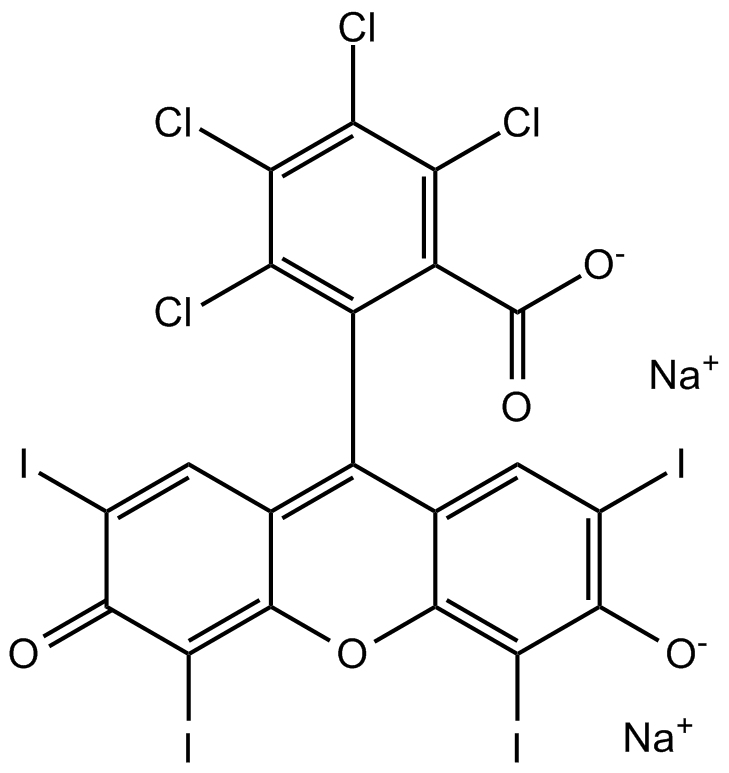Rose Bengal (Synonyms: Acid Red 94, Japan Red 105-1, Red No. 105-1) |
| Catalog No.GC15691 |
Rose Bengal, a synthetic fluorescein derivative, and is a crimson-coloured dye with the principal component being 4,5,6,7-tetrachloro-2,4,5,7-tetraiodo fluorescein.
Products are for research use only. Not for human use. We do not sell to patients.

Cas No.: 632-69-9
Sample solution is provided at 25 µL, 10mM.
Ki: 19 and 64 nM for VGlut andVMAT, respectively
Rose Bengal is a potent VGlut and vesicular monoamine transporter (VMAT) inhibitor.
The common biochemical l-glutamate (Glu) is widely recognized as the major excitatory neurotransmitter in the vertebrate CNS. Proper Glu transmission plays a critical role in physiological brain functions, such as learning and memory formation as well as basic neural communication.
In vitro: Rose Bengal was a quite potent membrane-permeant inhibitor of glutamate uptake into isolated synaptic vesicles. Such vesicular Glu uptake inhibition was achieved without affecting H1-pump ATPase. It was found that various degrees of reduction elicited by Rose Bengal in [3H]Glu in synaptic vesicles inside the synaptosome [1].
In vivo: The distribution of i.v. administered rose bengal was found to depend on its dose. At a low dose, rose bengal could be found almost solely in the liver and plasma. However, at higher doses, the amount of rose bengal found in extra-hepatic tissues gradually increased. The hepatic transfer maximum of rose bengal amounted to 146 micrograms/kg/min. By increasing the dose from 10 to 200 mg/kg, the hepatic concentration of rose bengal also approached a maximum. The storage capacity of the liver, however, did not limit the transfer maximum of rose bengal [1].
Clinical trial: N/A
References:
[1] Ogita K,Hirata K,Bole DG,Yoshida S,Tamura Y,Leckenby AM,Ueda T. Inhibition of vesicular glutamate storage and exocytotic release by Rose Bengal. J Neurochem.2001 Apr;77(1):34-42.
[2] Fischer E,Varga F. Hepatic storage and biliary excretion of rose bengal in the rat. Acta Physiol Acad Sci Hung.1979;54(1):89-94.
Average Rating: 5 (Based on Reviews and 13 reference(s) in Google Scholar.)
GLPBIO products are for RESEARCH USE ONLY. Please make sure your review or question is research based.
Required fields are marked with *




















